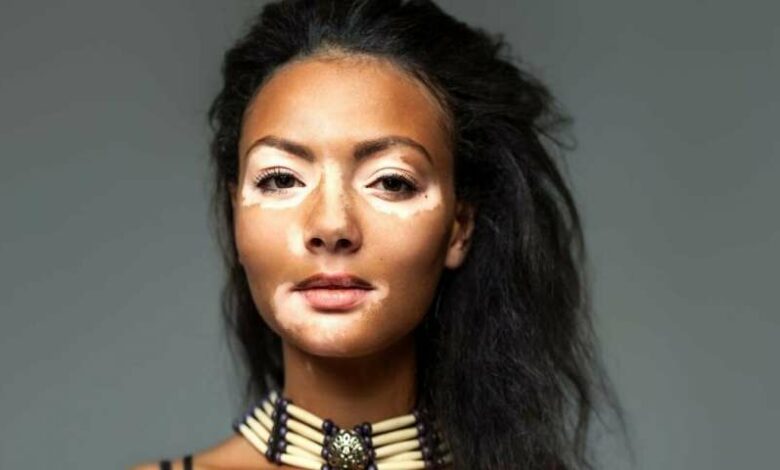8 Facts You Should Know About Vitiligo

8 Facts You Should Know About Vitiligo. Vitiligo is a condition in which your skin loses melanin, the pigment that determines the color of your skin, hair and eyes. If the cells that produce melanin die or no longer form melanin, slowly growing white patches of irregular shapes appear on your skin.
1. Vitiligo Is Painless
Vitiligo does not lead to any kind of physical pain in the person suffering from it. It affects the skin color, hair and sometimes the pupils which might cause some emotional and psychological trauma. People might suffer from depression due to their changing appearance.
2. Vitiligo Can Affect Anyone
Vitiligo can happen to anyone; people of any race, color, sex or age, however, it is most likely to happen to people with certain immune system diseases.
3. Vitiligo Starts Small
Vitiligo usually starts as small areas of pigment loss that spread and become larger with time. These changes in your skin can result in stress and worries about your appearance.
4. Vitiligo Is Not Life Threatening
Most people with vitiligo stay in a good health. Children might or might not get it if one of their parents suffers from vitiligo. Hence, vitiligo is a neutral skin condition which can affect anyone without a family medical history of the same.
5. Vitiligo Is Not Contagious
It is a disorder which replaces the natural skin tone with white spots and patches. It is not contagious, that is, vitiligo cannot be spread from one person to another by direct or indirect contact. It is not transferable by touch, sharing personal items, sexual intercourse etc.
6. Vitiligo Is Not Caused By Food Intake
There is no scientific evidence to prove that vitiligo can occur because of consuming white or citrus food items . Vitiligo is not caused by the consumption of any food item; it is said to be an autoimmune skin condition. Patients suffering from it can eat and drink any food item unless their doctor tells them otherwise.
7. Not All White Patches Lead To Vitiligo
Not all white spots or patches on the skin can be deemed as vitiligo. It is important to consult a doctor in case a white spot appears on the skin instead of self-diagnosis. There are several other conditions and diseases which begin from a white spot and are not vitiligo, these might be Nevus, post-burn skin, leprosy, fungal infections etc.
8. Vitiligo Has No Cure But Can Be Managed
There is no cure for vitiligo. The only way to treat it is to improve your appearance. A couple of treatments to consider include, Depigmentation: This treatment involves fading the rest of the skin on the body to match the areas that are already white.




